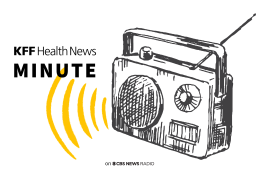Copayments Reduce Likelihood Women Will Receive Regular Mammograms, Study Finds
A copayment of $12.50 to $35 reduces by 8.3 percentage points the likelihood that women will receive regular mammograms to detect breast cancer, according to a study published on Thursday in the New England Journal of Medicine, the Wall Street Journal reports (Armstrong, Wall Street Journal, 1/24).
For the study, Amal Trivedi of Brown University and colleagues examined data from more than 366,000 women ages 65 to 69 who were enrolled in 174 Medicare managed care plans in 38 states (Emery, Reuters, 1/23). During the study, the number of plans requiring a copay for a mammogram increased from three in 2001 to 21 in 2004. Most copays were $20, but the amounts ranged from $12.50 to $35 (Wall Street Journal, 1/24). The study found that mammogram rates increased by 3.4 percentage points among women in plans that paid the full amount, while the rates declined by 5.5 percentage points among women who had a copay.
Peter Bach of the Memorial Sloan-Kettering Cancer Center said the study "tests a fundamental presumption of the high-deductible movement -- that a knowledgeable consumer will make wise decisions when purchasing health care." He added in an NEJM editorial that the "findings suggest that the introduction of a small out-of-pocket expense led 8% of consumers to opt out of mammography -- a decision that, on average, was not in the best interest of their health."
Trivedi said, "I think it's a surprising result," adding, "Most people would consider $12 to be a rather modest sum. But when it came to this population, copays as low as $12 led to a very sharp decrease in the breast cancer screening rate." In addition, he said, "It would make clinical sense, and probably economic sense, for a health plan to eliminate a copay for a mammogram" (Reuters, 1/23). The researchers also recommended that Medicare eliminate copays for mammograms (AP/Google.com, 1/23).
The study is available online.
ABC News on Wednesday reported on the study (Johnson, ABCNews.com, 1/23). Video of the segment and expanded ABC News coverage are available online.






